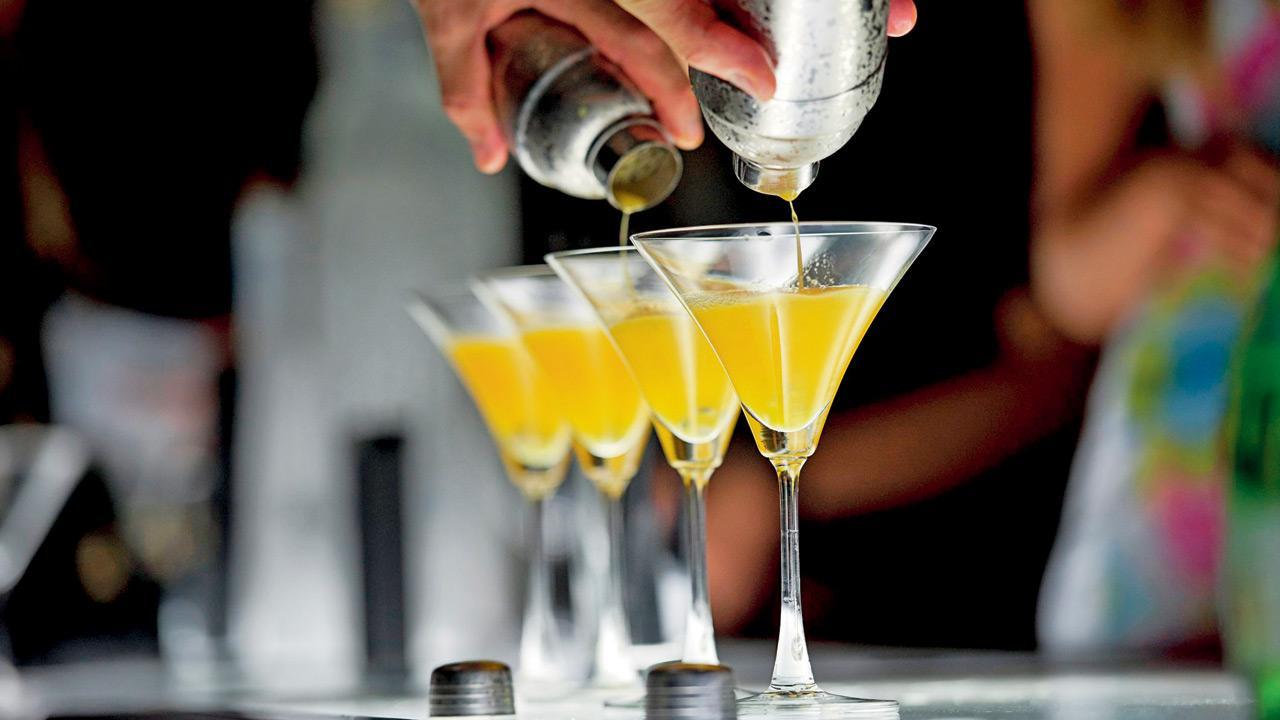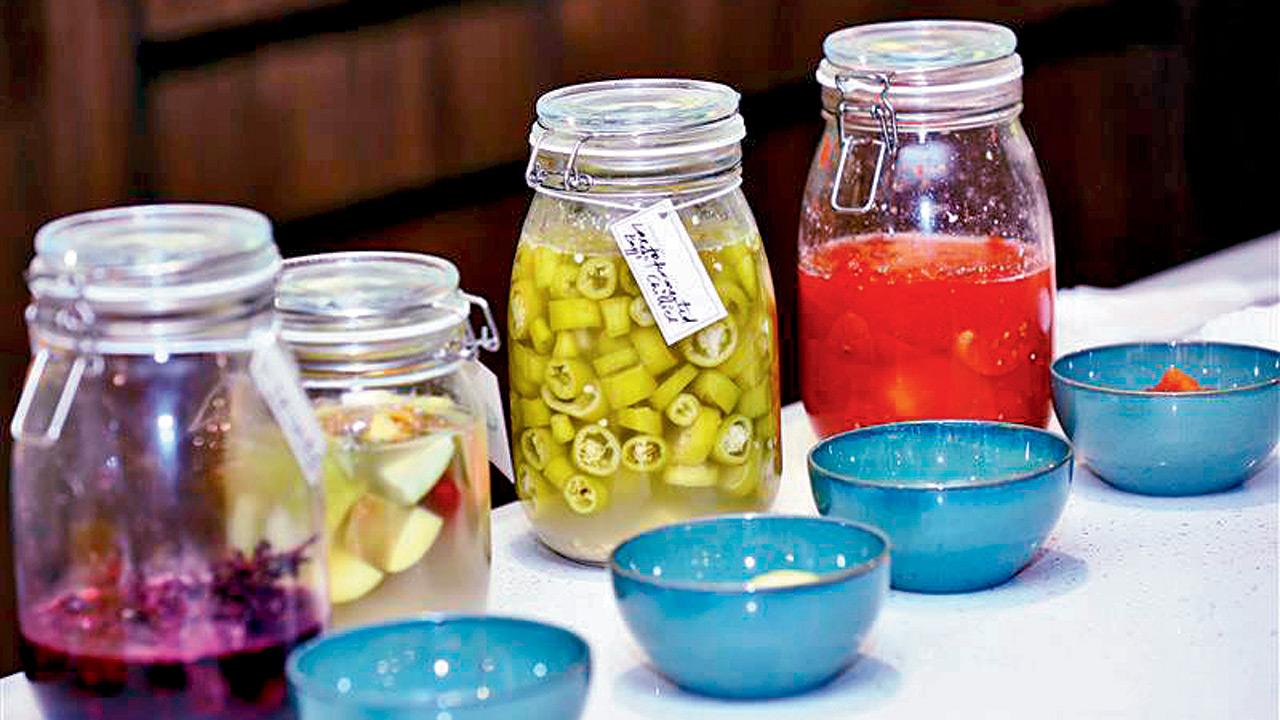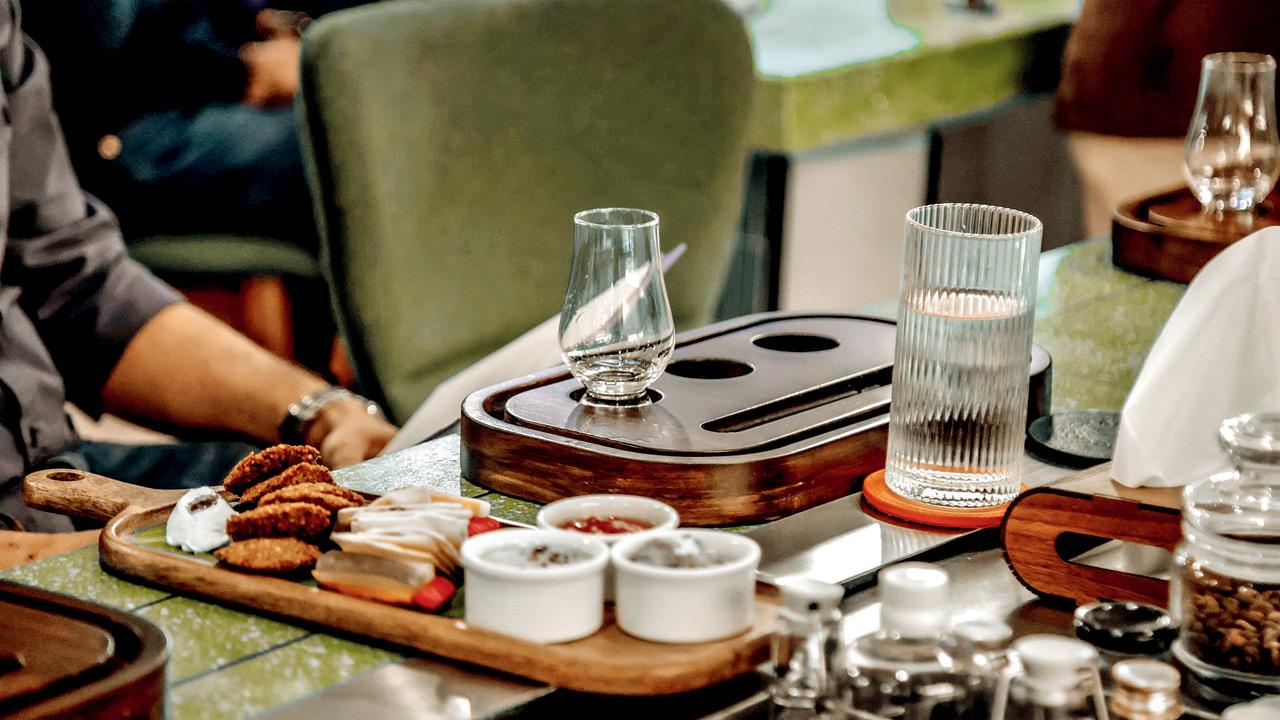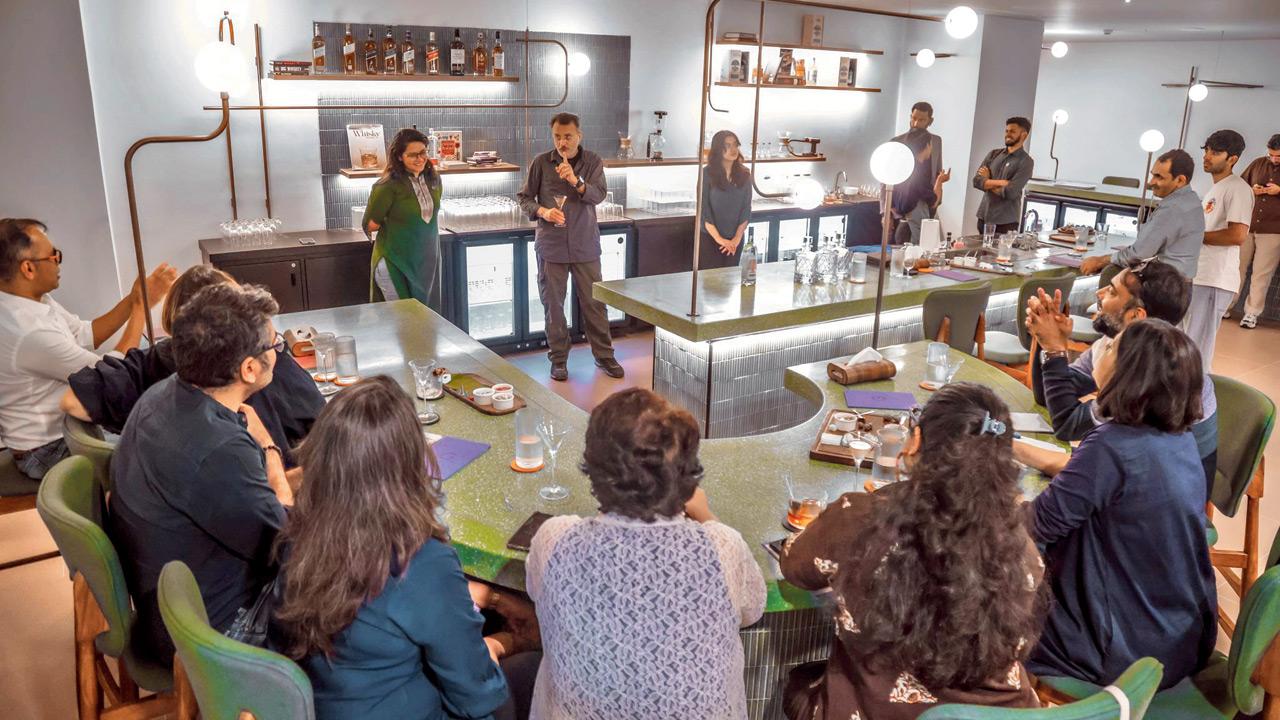An ‘experience home’ in Bengaluru awakens the five senses to liquors of Indian craft origin

Representation pic
Bengaluru weather is not the only thing that is good about the city. Folks at alcohol beverage company Diageo India, have transformed their research and development facility into The Good Craft Co, a flavour lab and experience home that spotlights Indian craft spirits through education and appreciation of the community.
ADVERTISEMENT
Our Google Maps guidance stops outside the Vydehi Medical College building in Whitefield. It’s intriguing that the flavour lab, dedicated to research into high alcoholic spirits—could be nestled in a pharma manufacturing facility or hospital.

Located on the third floor, the immersive experience begins with an inviting coffee bar at the reception. The swanky space rendered in grounding rust and cream colour, uplifted by green plants and warm decor promises an immersive experience through three more zones; The Academy, where the conversation delves into all things history and culture of Indian spirits; The Walkthrough gives a glimpse into the R&D rooms and the actual work that goes behind the scenes; And lastly, Bar & Fermentary ends the tour with a tasting session.
While we sip an espresso and charge our senses for what is to come, Vikram Damodaran, Chief Innovation Officer, Diageo India, explains the project’s motto: A passionate pursuit of good. “This goes beyond just having a good drink,” he says. “We want to discuss what a good drink is, the ingredients, the process, the transparency of creating it, and the importance of understanding the labels. Flavour starts in our kitchens, which we share with families, grandmothers and memories. We talk about the elevation of flavour across the entire process. It brings consumers closer to the foundational blocks of craft spirits—raw materials, processes, communities and makers, by understanding sourcing, ingredients, provenance, indigenous craft distillation, maturation and finishing processes.” Damodaran hints at a larger facility coming up in Goa in December 2025.

Diageo has converted its research and development facility in Bengaluru into an experience home, The Good Craft Co. Here, visitors can learn about craft Indian spirits through education, tastings and interaction
At the academy, a distilling copper pot serves as centrepiece, as does a map of India dotted by local spirits. We are in for an engaging session by Aniruddha Mookerjee, the Mahua man of the hour, who helmed Madhya Pradesh government’s project last year to bottle the spirit, in co-operation with a self-help group women. He has documented over 100 traditional Indian spirits and has a book in the offing, too. An ex-journalist, Mookerjee, began documenting Indian spirits when he was posted in Assam in 1985 and got a taste of local brews. “I was travelling extensively and tasting local spirits everywhere, but found no written documentation. So I started to study how locals made and consumed them,” says Mookerjee, who calls India the cradle of distillation.
This he bases on the time in the 1920s when British archaeologist John Marshall excavated sites across Northern India, including the Indus Valley, Takshashila and Charsadda (near Abbotabad in Pakistan). Another British archaeologist, Raymond Allchin, followed suite in the 1970s. “They found mud pots of various shapes, which when restored and assembled, looked like distillation apparatus,” says Mookerjee, “Marshall thought it was to purify salty water, however, Allchin strongly believed it was used to distil liquor. It looks the same as a home distillation apparatus would look today in Central India or, in principle, the traditional Lavni-Bhan combination used to make feni in Goa.”

Mahua, cashew nut and coconut feni tasting
While sap-based brews such as toddies are dominant down south, mahua qualifies as India’s national spirit, with its consumption spread across 12 states in the central region of the country. Rajasthan, Mookerjee explains, made mahua and jaggery-based spirits flavoured with spices such as javitri, jaiphal, cinnamon, laung, saunf, garam masala, gulab, kesar and kasturi. “These spirits ranged from mild alcoholic drinks, or those made purely for medicinal purposes or aphrodisiacs,” says Mookerjee.
In Kashmir, we learn, wines are made from grape raisins or munakka, while in the East (Bihar, West Bengal, Odisha) people made alcohol from mahua, rice and toddies. The North East has variations of brews and spirits made from rice, millet, barley, and buckwheat using different kinds of herbs and yeasts. “They collect yeast from the environment and shape them into small biscuits or balls.”

Payal Shah, Co-founder, Kobo Fermentary, has created a flavour wheel to give vocabulary to Indian ingredients
The conversation turns to different types of toddies made from date (Telangana, Odisha, Bihar, West Bengal, Madhya Pradesh, Chattisgarh), palmyra (Karnataka, Tamil Nadu, Madhya Pradesh and Gujarat), fishtail palm (Kerala, Odisha, West Bengal, Madhya Pradesh, Chattisgarh), also known as sulphi in central India. Coconut toddy is found along the coast from Gujarat to Tamil Nadu. Locals clamber up the tall trees to make a precision incision in the flower bud (only date sap is extracted from a gash in the trunk) and collect the sap, traditionally, in mud pots, which are being replaced by plastic today.
The conversation turns to Goa, where coconut feni is the oldest drink in southern India. “It is made by distilling toddy. While toddy can have one to five per cent alcohol, feni can go up to almost 45 per cent. Culturally, coconut feni is considered inferior to cashew feni, which is sad, for it is Goa’s original feni,” says Mookerjee, leaving us with a nugget: At 500 years, cashew feni is India’s youngest traditional spirit.
We get to take in a sniff of cashew and coconut fenis, toddy and mahua. The corridors are lined with labs for flavour separation, incubation, and molecular study, ending with blending and maturation units. Outside the flavour lab, our olfactory senses are tested as we sniff at swabs to identify fragrances of ajwain, peach, beer and coffee.

Aniruddha Mookherjee facilities a tasting session at the Bar and Fermentary
A micro-distillery, capacity 20 litres, allows developers to play with ingredients and processes to perfect their whiskeys, rums, gins and vodkas. “Diageo, in India, has multiple distilleries, each going through about 7,000 plus litres of spirits in a day. The small batches allow us to perfect the artisanal spirits before we put them into bigger distilleries,” Damodaran explains.
The set-up also has a small mill to make a grist, fermented in water, to make vats. Before distilling, they are passed onto the microbiology lab to be treated with different yeasts and cultures. This final output is called freshly-made spirit (FMS) and is matured in mini casks of different finishes. While most whiskies are aged in ex-bourbon casks, the centre also tests Indian cask woods to influence flavour.
The last zone, Bar & Fermentary, requires our contribution: Trying some fermented ingredients steeped for months in jars, and sipping cocktails. Colourful jars of ingredients create a tempting wall installation—fermented mahua, garlic, black grapes, amla, bajji chillies, passion fruit and spices.
Payal Shah, co-founder of Bengaluru-based Kobo Fermentary, pulls this section. The most unique is an Indian flavour wheel, similar to the international flavour wheel, for tastings. Divided into herbal, citrusy, sweet, fruity, masala and sour, the wheel helps understand and decode the Indian spirit language. Each is further broken into flavours to categorise ingredients such as jamun, doddapatre, gongura saffron and black salt.
At the bar, we tasted all the taste and process theories we had been taught so far: Coconut, cashew feni, and mahua spirits. Coconut feni has a milder, neutral taste palate, while cashew nut is bold and robust. Mahua is punchy and fragrant. Neil Alexander, mixologist from Bengaluru’s Windmills Brewery, takes over the bar to translate our experience into cocktails.

Even Flow pits mahua with a housemade Campari made with Indian spices and berry vermouth, turning the humble spirit into a negroni. India comes forth shining in Catfish Rising—honey and turmeric mingle with dukshiri (a coconut feni distilled with a root called sarsaparilla) and the balanced bitterness of craft amaro, finished with hickory smoke. Our journey of understanding heritage spirits became a palatable modern-day
bar hop.
Alexander approaches the cocktails tactfully. “Since it is an R&D and experience centre, you have the freedom to educate people and give them an experience they would not have thought of,” he says. “We’re working with heritage spirits, so we want to make it approachable for guests by contrasting flavours and techniques. You don’t get feni or mahua outside of Goa. Here, we can narrate their stories for the guests.”
 Subscribe today by clicking the link and stay updated with the latest news!" Click here!
Subscribe today by clicking the link and stay updated with the latest news!" Click here!







